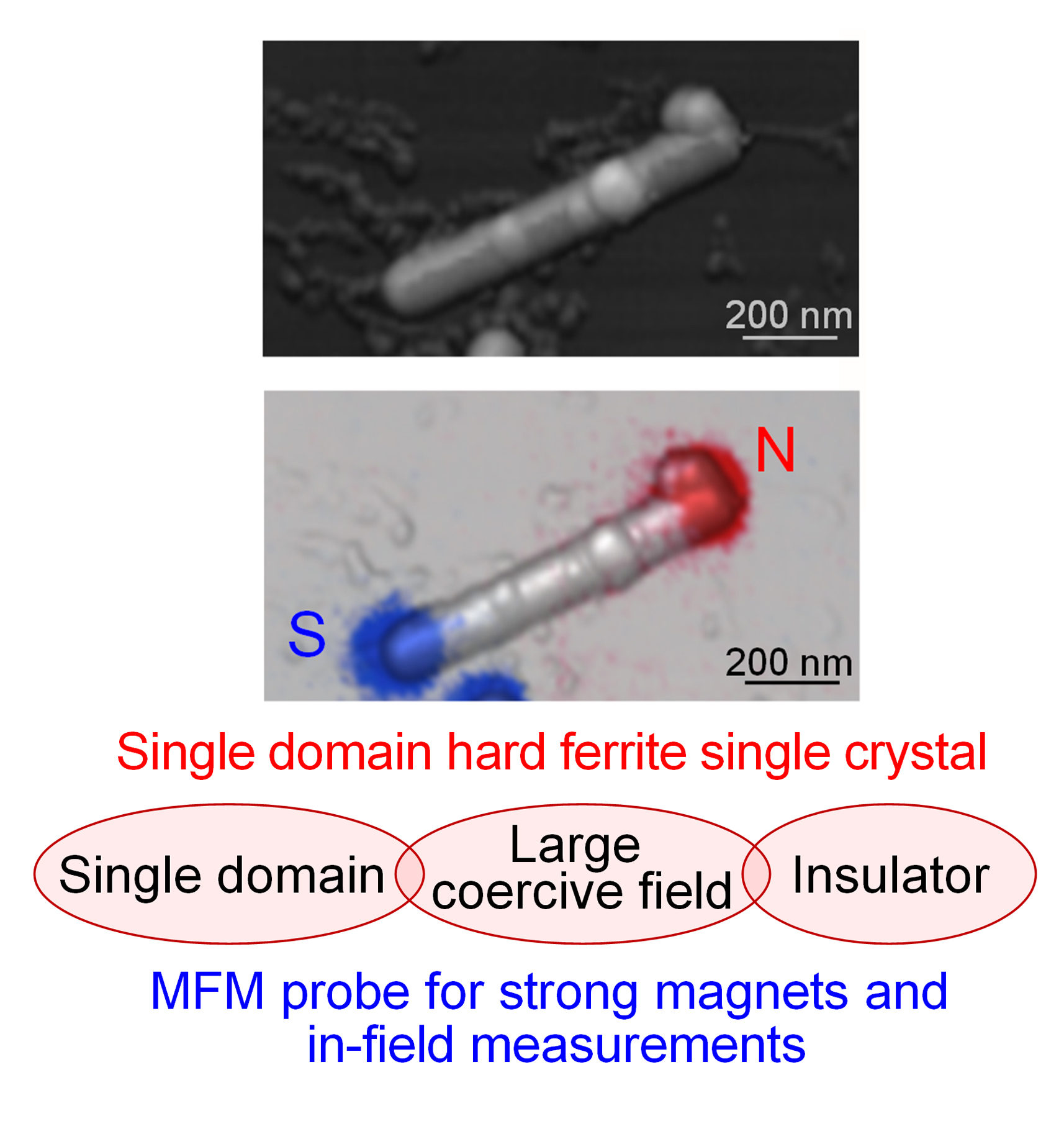Microscopy probe can observe strong magnets Rustproof ferrite bar magnet withstands strong magnetic field and electric current


Rustproof ferrite bar magnet withstands strong magnetic field and electric current used for magnetic force microscopy (MFM) probe
Submicron size ferrite bar magnet was found to be a single domain bar magnet, with north and south poles exist at the edge of the bar, from atomic force microscopy (AFM) (left upper figure) and magnetic force microscopy (MFM) images (left lower figure). The characteristics of the bar magnet suggest that it will enable measurements using MFM even under strong magnetic fields.
© 2016 Shin-ichi Ohkoshi
A research group at the University of Tokyo, Tsukuba University, and Hitachi High-Tech Corporation has developed a magnetic force microscopy probe, enabling observation of the surface of strong magnets and in-field measurements (measurements under a magnetic field), both difficult with conventional techniques. This was made possible by the development of a submicrometer size, extremely powerful ideal ferrite bar magnet.
Ferrite bar magnets are composed of abundant and low cost materials and have been used in toys, stationery, and crafts. Typical black ferrite bar magnets are produced by hot pressing magnetic powder, and therefore, the bar magnet cannot be a single magnetic domain material (magnetic material with one pair of N-pole and S-pole).
Now, the research group of Professor Shin-ichi Ohkoshi at the University of Tokyo’s Graduate School of Science, Associate Professor Hiroko Tokoro at the University of Tsukuba’s Faculty of Pure and Applied Sciences and Dr. Takehiro Yamaoka at Hitachi High-Tech Corporation has succeeded in developing an ideal single crystal hard ferrite bar magnet with a single magnetic domain. Instead of compressing magnetic powder, the magnets were produced by using a unique chemical synthesis method, the combination of the reverse-micelle and sol-gel methods. This bar magnet is a submicrometer size single crystal ferrite bar magnet composed of epsilon ferric oxide (ε-Fe2O3), whose magnetic poles do not easily flip with even under strong magnetic field, and it is resistant to strong magnetic field, electric current, and also does not rust. Taking advantage of these properties, the research group developed a probe for magnetic force microscopy (MFM) and a paint and film using the material as a high frequency millimeter wave absorber.
“We expect this ferrite bar magnet to find applications in the emerging Internet of Things as a high frequency millimeter wave absorbing material say for safe driving support systems,” says Ohkoshi. He continues, “The ferrite magnet we have developed in this research will be displayed in the special exhibition at the Science Museum, London from 15th July 2016.
Press release (Japanese)
Paper
, "Mesoscopic bar magnet based on ε-Fe2O3 hard ferrite", Scientific Reports: 2016/06/07 (Japan time), doi: 10.1038/srep27212.
Article link (Publication, UTokyo Repository)
Links
Department of Chemistry, Graduate School of Science
Ohkoshi Laboratory, Department of Chemistry, Graduate School of Science






